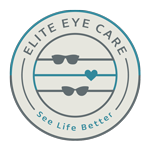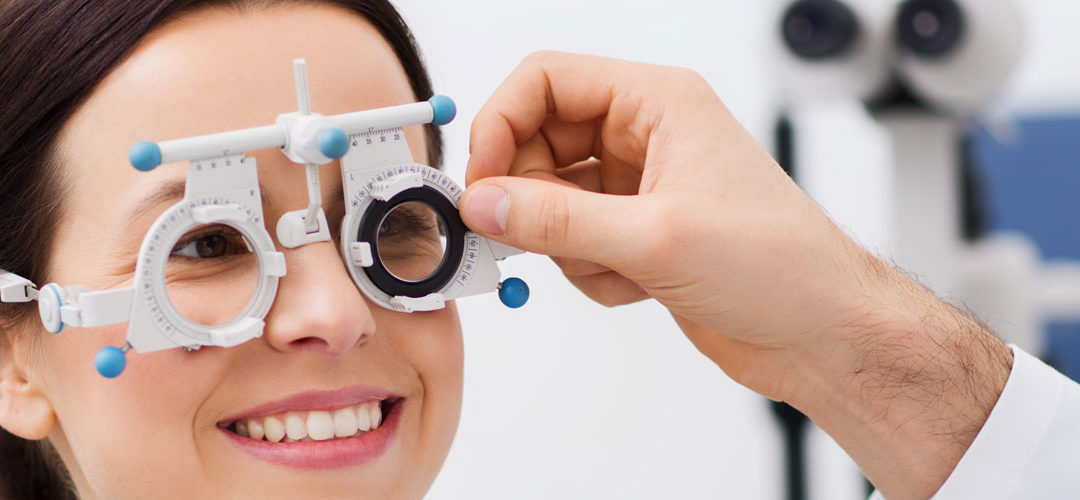The annual eye exam may seem like just reading some letters or looking at lights, but trust me, your eye doctor is evaluating a lot more than you realize. At every comprehensive exam, your eye doctor is trying to evaluate three major areas:
1. Refractive Error- checking for an eye-glasses prescription.
2. Binocular Vision- making sure both eyes are functioning well together.
3. Complete Eye Health- all structures from outside to inside of the eye.
These tests listed below are how we evaluate and monitor the three major areas previously noted. I have listed all of the tests that are performed at Elite Eye Care and may vary depending on your provider and equipment available.
Preliminary Testing: may be performed by a technician or eye doctor
Autorefractor: A device that takes a measurement of your eyes in order to get an estimate on your prescription. It is not a perfect measurement, so that is why we refine it with the refraction (which is better 1 or 2).
Screening Visual Field: It may be as simple as counting fingers or looking into a device and clicking a remote every time you see a light or bars appear in your peripheral vision. This checks your side vision and may show signs of glaucoma or other neurological problems that cause loss of peripheral vision.
Intraocular Eye Pressure: Most people remember this as the air puff and it checks your eye pressure for a condition called glaucoma. Our office does not have the air puff but has a new device that is hand held and only feels like a tickle on your eyelashes.
Visual Acuity: Reading the eye chart with or without glasses both in the distance and at near. It is good to do this initially before actually checking for glasses because it tells us how you are seeing before we make it better.
Color Vision: This is a good test to perform for younger kids as well as adults, because it can pick up genetic color blindness in children and can show changes in color vision secondary to an eye disease in adults.
Depth Perception: When checking your depth perception, we are looking to make sure your eyes are working together because eye misalignment will cause poor test results.
Eye Muscles: You may be asked to follow an object with just your eyes or look at an object while the doctor covers and uncovers your eyes with a paddle. These tests are checking you eye alignment and eye muscles to make sure the eyes are working together and that all your eye muscles are functioning correctly.
Blood Pressure: Your eye doctor is not checking your blood pressure because they are going to treat it themselves, but because a lot of general health conditions like elevated blood pressure, diabetes, and many others will cause changes to your eyes and vision.
Refraction:
This is the time when your doctor asks, which is better one or two. The refraction involves incorporating your current eye-glasses prescription, visual acuity test, autorefractor results, and your answers to the “which is better 1 or 2” to calculate and create the best eye-glasses prescription. This is a very delicate process and calculation because a prescription that is too weak may cause blurry vision and one that is too strong may cause eye strain and headaches.
Many patients get very nervous during this testing because “they do not want to answer wrong and get the wrong glasses”. I will say that is important to pay attention and answer as directed by your eye doctor, but there is a lot of double checking your responses and that your responses are only part of the calculation. So, do not be nervous, just do the best you can and trust your eye doctor.
During the refraction, we also check eye alignment and focusing, which are important to reduce eye strain, double vision, or vision related headaches.
Eye Health Evaluation:
This involves a full evaluation of all the external and internal structures of the eye. I have listed several of the structures and conditions that are evaluated during this test.
Eyelid, Conjunctiva, Cornea, Iris, Lens, Vitreous, Retina, Blood supply (arteries and veins of retina and other structures), Optic Nerve, and Macula. These structures are not just view and move on, but in most cases have layers that need to be evaluated or structures that need to be measured.
Conditions evaluated- dry eye, contact lens infection or over-wear, cataracts, floaters, glaucoma, macular degeneration, retinal changes from general health conditions (diabetes, high blood pressure, and elevated cholesterol), retinal or choroidal moles/nevus, retinal holes/tears/detachment, and others.
I hope that this list has not confused you but given you an insight into all that are evaluated and tested to make sure that you can continue to SEE LIFE BETTER. It is also my hope that you will see the importance of having your eyes evaluated on a regular basis, because as you have just read there is a lot more to your eyes than “just seeing good”. In my next post, I will be discussing the importance of children’s eye exams and the importance of having healthy eyes and clear vision for back to school.
Cheers,
Dr. Keller

